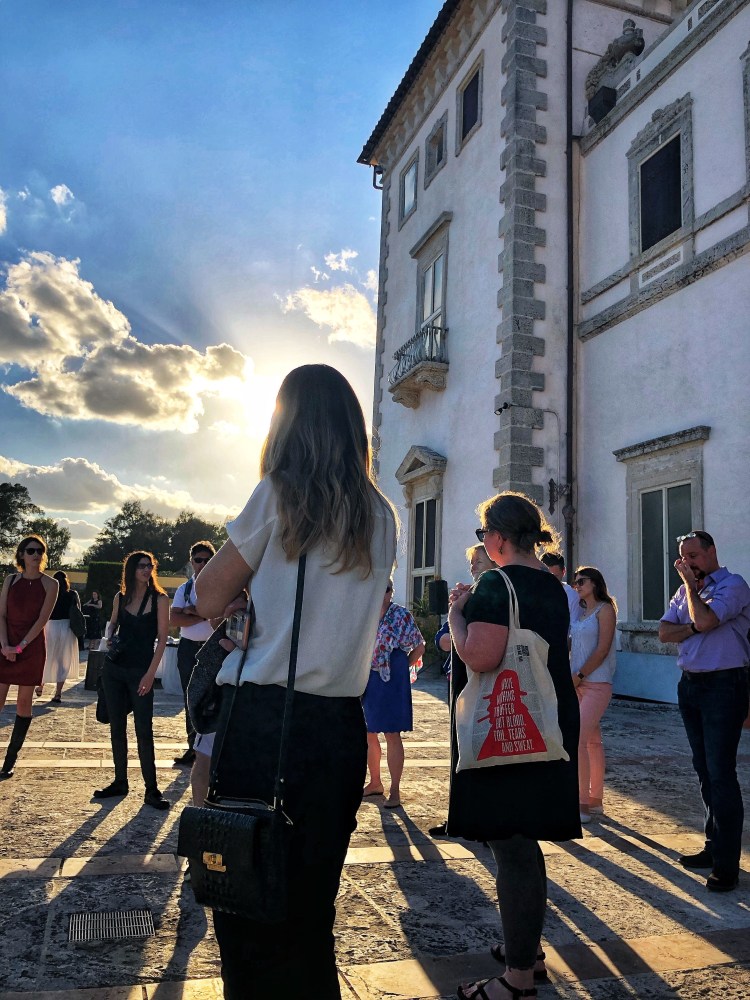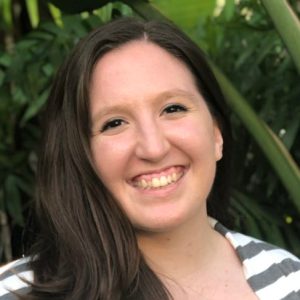
On February 3-5, 2019, AAM’s Historic Houses and Sites and Environment and Climate networks hosted a rare convening of experts at Vizcaya Museum and Gardens in Miami, Florida, for “Sustainability: Governance, Relevance, and the Environment.” This two-day summit focused on the topic of sustainability for historic sites, both in financial health and in facing the impact of climate-related changes. Two scholarships were provided to emerging museum professionals thanks to the generosity of Rowman & Littlefield and DEMHIST, International Committee for Historic House Museums. We asked the recipients to share their reflections and takeaways from the summit, starting with graduate student and historic house employee Abigail Winslow.
Tell us a little about yourself.
In the fall of 2018 I began my master’s degree in public history at Florida Gulf Coast University, and I will graduate in 2020. I currently hold two part-time positions in addition to attending graduate school. At the Edison and Ford Winter Estates I work as a Front Desk and Group Sales Assistant and for the days I am not there I am working in the archives at Florida Gulf Coast University. I first became interested in the public sector of history when my grandfather took me to a Civil War reenactment as a girl and my passion furthered when I started as a volunteer at the Edison and Ford Winter Estates right after my fifteenth birthday. During my senior year of college, I began an internship in the curatorial department there and realized that I wanted to pursue a career preserving historic homes. I am also considering pursuing a second masters in historic preservation next year.
How did you initially learn about this summit? What aspects of the program piqued your interest the most and why?
I first heard about 2019 Historic House Summit, “Sustainability: Governance, Relevance, and the Environment,” from Brent Newman, the curator at the Edison and Ford Winter Estates. He planned on attending the summit and mentioned that I might be interested and recommended that I apply for the scholarship to go. The summit immediately piqued my interest, as the topic related to historic houses, my newfound career route. The conferences I attended previously were constricted to the realm of academic history, and while they contained noteworthy panels and thought-provoking discussions, they did not relate to my field of interest. In addition to the summit centering around the topic of historic houses, I also found it intriguing that the location itself served as a case study for sustainability in a changing climate.
What were three key takeaways?
The first thing that I took with me from this conference is the idea that it is not difficult for a historic house museum to become eco-friendly. Graduating from a university centered around the core belief of protecting the environment, I understand the importance of limiting one’s ecological footprint, but I never imagined that one could make it simple for an entire historic site to become environmentally friendly just by starting with something small and implementing more habits over time.
The second thing that I took with me from this summit is the feeling of support within this field I am striving to become a part of. During each session or discussion, I saw people voice problems or challenges that others readily responded to by offering helpful advice and support. I noticed professionals who were the only ones with their job at their site but were able to meet and converse with others in the field who held the same job title. And though my job at the Edison and Ford Winter Estates is an office position, I found my ambitions readily welcomed with sound support and advice.
The third and last thing that I took with me from this summit is the unpredictability of working with a historic home in a changing climate or economy and the need for professionals to be ready for the challenge. The future is not certain, and historic landmarks will only remain if the needed precautions are taken and followed through with.

What was your favorite session or speaker, and why?
The section titled “Planning for natural disaster from blizzards to hurricanes,” hosted by Susan Funk, the COO of the Mystic Seaport Museum, stood out as my favorite session. During Hurricane Irma in 2017, I worked as an intern at the Edison and Ford Winter Estates. The entire staff, including myself, experienced a feeling of dread and anxiety as we gathered together in the few days before the storm to accept and perform assigned tasks to prepare the historic homes and surrounding property for the impending disaster. Funk’s session brought professionals together, including the two associates from the Edison and Ford Winter Estates I attended with, who experienced some form of natural disaster. During the time allotted to us, we discussed different situations that each person experienced, the problems that occurred, changes made to each site’s disaster checklist afterwards, and how to prepare for the future.
This session stood out as my favorite because it related to something I experienced first-hand and something the Edison and Ford Winter Estates may encounter again. It is important to learn from disasters, make changes, and become better prepared in the future. While I hope a hurricane never hits Southwest Florida again, establishing the best precautions will help prevent worst-case scenarios. I took a lot of notes on the ideas presented by people who shared during this session and I noticed others did as well. Sessions such as these allow for the betterment of the field by encouraging collaboration between those who have not experienced something and those who have, and have knowledge and insight to share from it.
Skip over related stories to continue reading articleWhat was the most valuable part of the summit?
In my opinion, the most valuable part of the summit was the conversations that developed and carried out for the duration of those few days in Miami. The conferences I attended in the past consisted of a much larger breadth of attendees, with two or three panels commencing at the same time, making it difficult to make tangible connections. But at this summit; long, rich conversations normally took place after the panels finished, whether sitting in the corner of a no-name restaurant or talking over email in the weeks and months to follow. The structure of the summit automatically presented itself as an opportunity for deep connections and lengthy, thought-provoking discussions on problems and solutions related to historic house sustainability. The smaller number of attendees in comparison to larger conferences allowed faces to become familiar and provided everyone with the opportunity to speak to every single other summit attendee. The focused topic of the summit also allowed for deeper discussions about everyone’s job and how they can use it to contribute to the sustainability of their historic house site.
How do you plan to use the knowledge you gained in your daily work and/or research?
As I mentioned previously, the idea that creating an eco-friendly environment for a historic house museum can begin anywhere, no matter how big or small, stood out to me. Upon returning to work after the summit, I and one of my associates took some time to sit down with the notes we took and discussed ideas for the future environmental sustainability of the Edison and Ford Winter Estates. As we learned at the summit, we can begin small and go from there, so we wrote out lists of simple changes and ones that might take longer. In our simple list we included turning out the lights in rooms once we leave, using filtered faucets as opposed to water coolers, utilizing the opposite side of used paper, prompting other employees to recycle more, and transitioning to energy saving light bulbs over time. Our long-term plan included ideas such as creating a compost on the property for employees’ leftover lunches, installing car-charging stations on the property, and limiting the toilet paper output in the bathrooms to encourage reducing waste.
For these bigger plans, we’ll of course need approval before implementing them. But we both knew of small-scale changes we could make in our different departments, her in the curatorial department and me in the administration office, like turning out the lights, my office using the opposite side of used paper, and hers gradually installing energy-efficient light bulbs as the older ones die. For the other ideas, we passed them up to the curator and have the hope of gaining approval to implement more ambitious changes to benefit the property and the future of the home’s sustainability going forward.









Comments